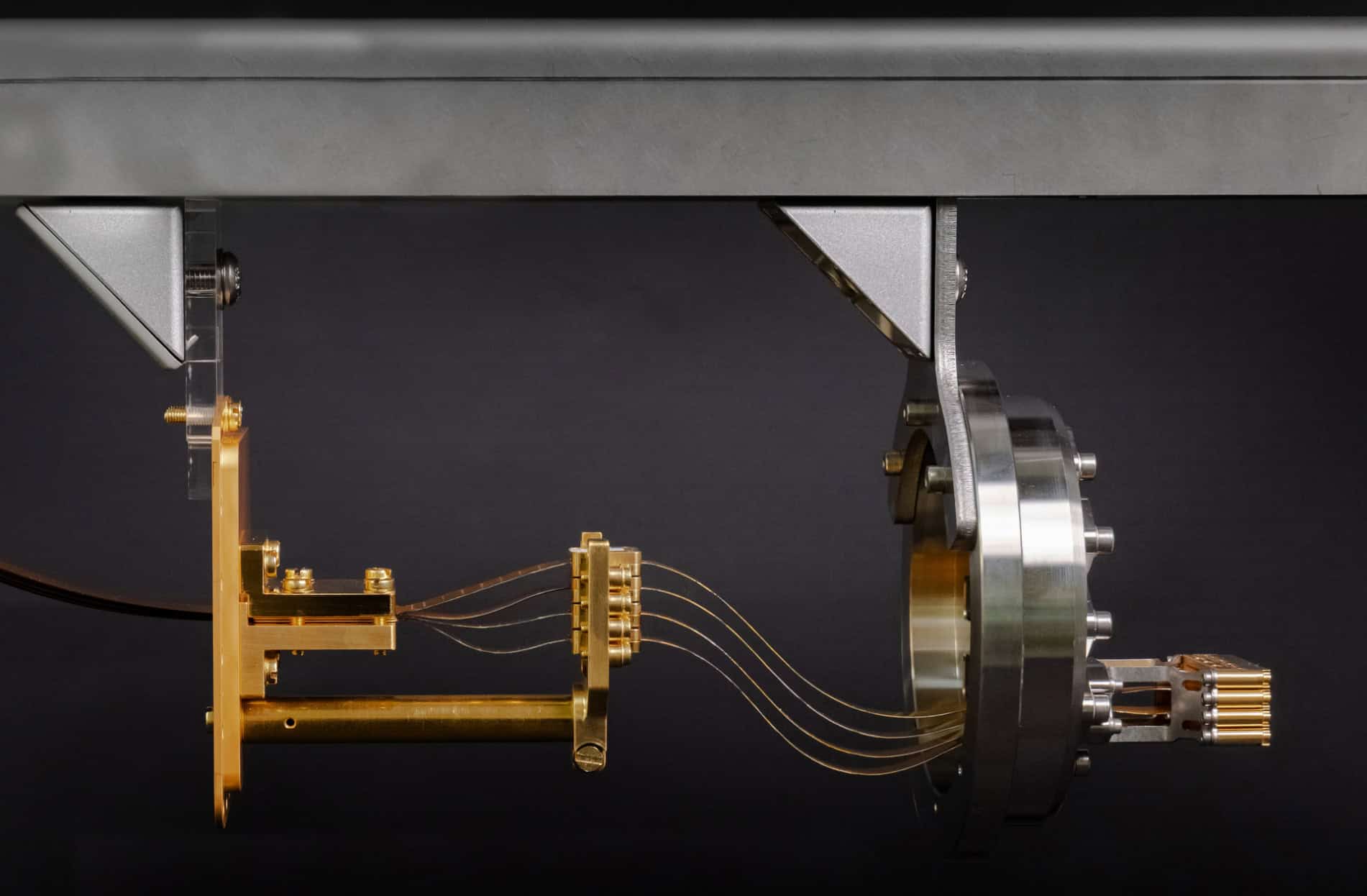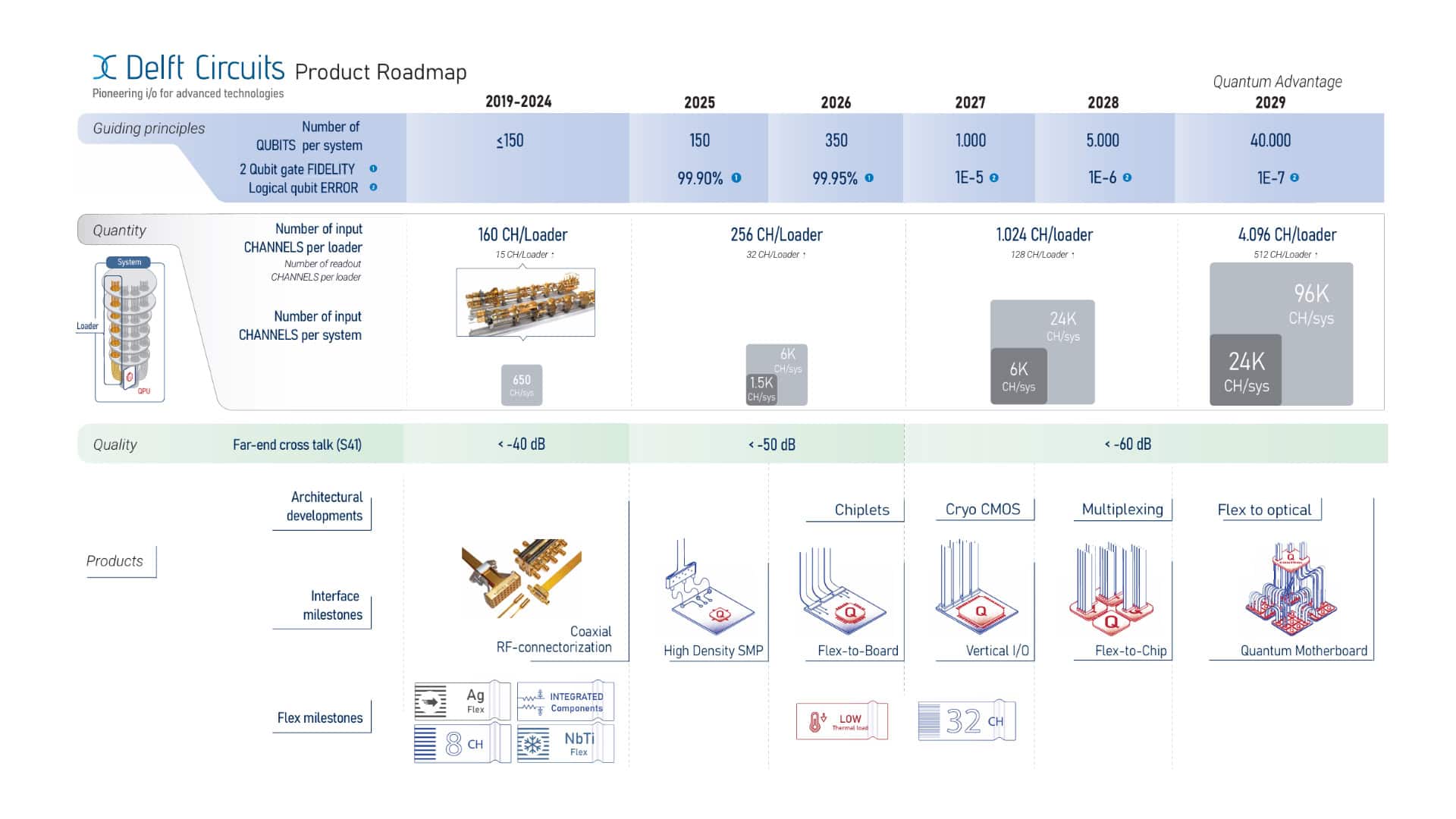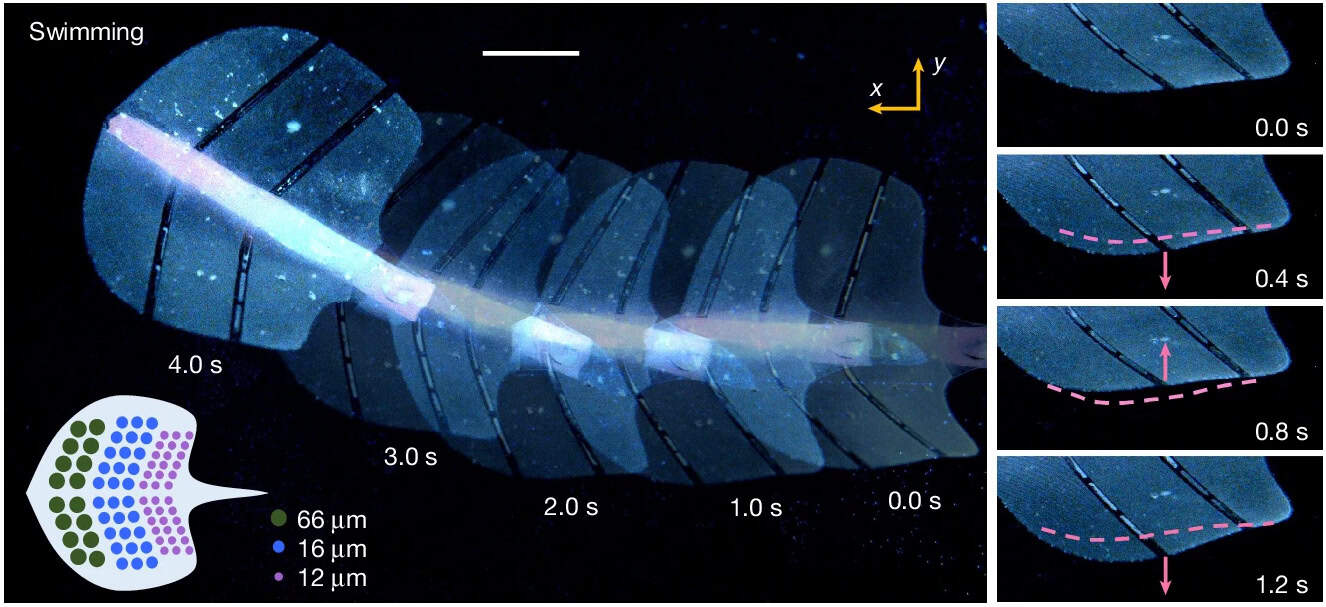Shortness of Breath, Rather Than Pain, May Be a More Critical Warning Sign in Hospital Patients



A new solid rocket production facility is expected to be operational by early 2028, though Avio has not yet disclosed its location.
The post Avio secures solid rocket deals with Lockheed Martin, Raytheon appeared first on SpaceNews.

November 10, 2025 – Washington, D.C.—The Commercial Space Federation (CSF) is pleased to welcome Seagate Space, Michael Baker International, and Lanteris Space Systems as new Associate Members. These new members […]
The post Commercial Space Federation (CSF) Welcomes New Associate Members appeared first on SpaceNews.
%20(online-video-cutter.com).gif)

Spain’s Sateliot announced plans Nov. 10 to develop upgraded satellites from newly expanded facilities in Barcelona, aiming to move beyond connecting sensors and machines to also provide wideband voice, video and data links directly to smartphones.
The post Sateliot opens Barcelona facility to build more capable direct-to-device satellites appeared first on SpaceNews.
“Drain the swamp!”
In the intense first few months of his second US presidency, Donald Trump has been enacting his old campaign promise with a vengeance. He’s ridding all the muck from the American federal bureaucracy, he claims, and finally bringing it back under control.
Scientific projects and institutions are particular targets of his, with one recent casualty being the High Energy Physics Advisory Panel (HEPAP). Outsiders might shrug their shoulders at a panel of scientists being axed. Panels come and go. Also, any development in Washington these days is accompanied by confusion, uncertainty, and the possibility of reversal.
But HEPAP’s dissolution is different. Set up in 1967, it’s been a valuable and long-standing advisory committee of the Office of Science at the US Department of Energy (DOE). HEPAP has a distinguished track record of developing, supporting and reviewing high-energy physics programmes, setting priorities and balancing different areas. Many scientists are horrified by its axing.
Since taking office in January 2025, Trump has issued a flurry of executive orders – presidential decrees that do not need Congressional approval, legislative review, or public debate. One order, which he signed in February, was entitled “Commencing the Reduction of the Federal Bureaucracy”.
It sought to reduce parts of the government “that the President has determined are unnecessary”, seeking to eliminate “waste and abuse, reduce inflation, and promote American freedom and innovation”. While supporters see those as laudable goals, opponents believe the order is driving a stake into the heart of US science.
Hugely valuable, long-standing scientific advisory committees have been axed at key federal agencies, including NASA, the National Science Foundation, the Environmental Protection Agency, the National Oceanic and Atmospheric Administration, the US Geological Service, the National Institute of Health, the Food and Drug Administration, and the Centers for Disease Control and Prevention.
What’s more, the committees were terminated without warning or debate, eliminating load-bearing pillars of the US science infrastructure. It was, as the Columbia University sociologist Gil Eyal put it in a recent talk, the “Trump 2.0 Blitzkrieg”.
Then, on 30 September, Trump’s enablers took aim at advisory committees at the DOE Office of Science. According to the DOE’s website, a new Office of Science Advisory Committee (SCAC) will take over functions of the six former discretionary (non-legislatively mandated) Office of Science advisory committees.
“Any current charged responsibilities of these former committees will be transferred to the SCAC,” the website states matter-of-factly. The committee will provide “independent, consensus advice regarding complex scientific and technical issues” to the entire Office of Science. Its members will be appointed by under secretary for science Dario Gil – a political appointee.
Apart from HEPAP, others axed without warning were the Nuclear Science Advisory Committee, the Basic Energy Sciences Advisory Committee, the Fusion Energy Sciences Advisory Committee, the Advanced Scientific Computing Advisory Committee, and the Biological and Environmental Research Advisory Committee.
Over the years, each committee served a different community and was represented by prominent research scientists who were closely in touch with other researchers. Each committee could therefore assemble the awareness of – and technical knowledge about – emerging promising initiatives and identify the less promising ones.
Many committee members only learned of the changes when they received letters or e-mails out of the blue informing them that their committee had been dissolved, that a new committee had replaced them, and that they were not on it. No explanation was given.
Closing HEPAP and the other Office of Science committees will hamper both the technical support and community input that it has relied on to promote the efficient, effective and robust growth of physics.
Physicists whom I have spoken to are appalled for two main reasons. One is that closing HEPAP and the other Office of Science committees will hamper both the technical support and community input that it has relied on to promote the efficient, effective and robust growth of physics.
“Speaking just for high-energy physics, HEPAP gave feedback on the DOE and NSF funding strategies and priorities for the high-energy physics experiments”, says Kay Kinoshita from the University of Cincinnati, a former HEPAP member. “The panel system provided a conduit for information between the agencies and the community, so the community felt heard and the agencies were (mostly) aligned with the community consensus”.
As Kinoshita continued: “There are complex questions that each panel has to deal with. even within the topical area. It’s hard to see how a broader panel is going to make better strategic decisions, ‘better’ meaning in terms of scientific advancement. In terms of community buy-in I expect it will be worse.”
Other physicists cite a second reason for alarm. The elimination of the advisory committees spreads the expertise so thinly as to increase the likelihood of political pressure on decisions. “If you have one committee you are not going to get the right kind of fine detail,” says Michael Lubell, a physicist and science-policy expert at the City College of New York, who has sat in on meetings of most of the Office of Science advisory committees.
“You’ll get opinions from people outside that area and you won’t be able to get information that you need as a policy maker to decide how the resources are to be allocated,” he adds. “A condensed-matter physicist for example, would probably have insufficient knowledge to advise DOE on particle physics. Instead, new committee members would be expected to vet programs based on ideological conformity to what the Administration wants.”
At the end of the Second World War, the US began to construct an ambitious long-range plan to promote science that began with the establishment of the National Science Foundation in 1950 and developed and extended ever since. The plan aimed to incorporate both the ability of elected politicians to direct science towards social needs and the independence of scientists to explore what is possible.
US presidents have, of course, had pet scientific projects: the War on Cancer (Nixon), the Moon Shot (Kennedy), promoting renewable energy (Carter), to mention a few. But it is one thing for a president to set science to producing a socially desirable product and another to manipulate the scientific process itself.
“This is another sad day for American science,” says Lubell. “If I were a young person just embarking on a career, I would get the hell out of the country. I would not want to waste the most creative years of my life waiting for things to turn around, if they ever do. What a way to destroy a legacy!”
The end of HEPAP is not draining a swamp but creating one.
The post Is Donald Trump conducting a ‘blitzkrieg’ on science? appeared first on Physics World.


Recent reports suggest that NASA is looking to accelerate its lunar landing timeline — partly to ensure that America returns to the moon before China does. The echoes of the 1960s Space Race are unmistakable. Once again, the focus seems to be on being first — planting a flag, capturing headlines and proving technological superiority. […]
The post The fallacy of being first — let’s be enduring instead appeared first on SpaceNews.

Washington, D.C. — November 10, 2025 — SpaceNews, the leading source of global space industry reporting and analysis, partnered with the Johns Hopkins University Bloomberg Center to launch a new […]
The post SpaceNews, JHU Bring Together Space Leaders to Discuss Commercial and Government Space Collaboration appeared first on SpaceNews.

The focus of direct-to-device (D2D) services so far has been mainly on extending the coverage of terrestrial cellular networks for cell phones and remote IoT devices. Although this presents a great business opportunity for both D2D satellite and terrestrial Mobile Network Operators (MNOs), the satellite industry needs to be conscious about another fast-developing opportunity in […]
The post Mobile Private Networks are a great opportunity for direct-to-device satellite operators to secure and grow their enterprise business appeared first on SpaceNews.

China conducted a pair launches late Sunday, adding to the national Guowang megaconstellation, but also suffering the failure of a Ceres-1 commercial solid rocket.
The post China expands Guowang constellation, Galactic Energy suffers Ceres-1 launch failure appeared first on SpaceNews.



Better together. That’s the headline take on a newly inked technology partnership between Bluefors, a heavyweight Finnish supplier of cryogenic measurement systems, and Delft Circuits, a Dutch manufacturer of specialist I/O cabling solutions designed for the scale-up and industrial deployment of next-generation quantum computers.
The drivers behind the tie-up are clear: as quantum systems evolve – think vastly increased qubit counts plus ever-more exacting requirements on gate fidelity – developers in research and industry will reach a point where current coax cabling technology doesn’t cut it anymore. The answer? Collaboration, joined-up thinking and product innovation.
In short, by integrating Delft Circuits’ Cri/oFlex® cabling technology into Bluefors’ dilution refrigerators, the vendors’ combined customer base will benefit from a complete, industrially proven and fully scalable I/O solution for their quantum systems. The end-game: to overcome the quantum tech industry’s biggest bottleneck, forging a development pathway from quantum computing systems with hundreds of qubits today to tens of thousands of qubits by 2030.
For context, Cri/oFlex® cryogenic RF cables comprise a stripline (a type of transmission line) based on planar microwave circuitry – essentially a conducting strip encapsulated in dielectric material and sandwiched between two conducting ground planes. The use of the polyimide Kapton® as the dielectric ensures Cri/oFlex® cables remain flexible in cryogenic environments (which are necessary to generate quantum states, manipulate them and read them out), with silver or superconducting NbTi providing the conductive strip and ground layer. The standard product comes as a multichannel flex (eight channels per flex) with a range of I/O channel configurations tailored to the customer’s application needs, including flux bias lines, microwave drive lines, signal lines or read-out lines.

“Reliability is a given with Cri/oFlex®,” says Robby Ferdinandus, global chief commercial officer for Delft Circuits and a driving force behind the partnership with Bluefors. “By integrating components such as attenuators and filters directly into the flex,” he adds, “we eliminate extra parts and reduce points of failure. Combined with fast thermalization at every temperature stage, our technology ensures stable performance across thousands of channels, unmatched by any other I/O solution.”
Technology aside, the new partnership is informed by a “one-stop shop” mindset, offering the high-density Cri/oFlex® solution pre-installed and fully tested in Bluefors cryogenic measurement systems. For the end-user, think turnkey efficiency: streamlined installation, commissioning, acceptance and, ultimately, enhanced system uptime.
Scalability is front-and-centre too, thanks to Delft Circuits’ pre-assembled and tested side-loading systems. The high-density I/O cabling solution delivers up to 50% more channels per side-loading port to Bluefors’ (current) High Density Wiring, providing a total of 1536 input or control lines to an XLDsl cryostat. In addition, more wiring lines can be added to multiple KF ports as a custom option.

Reciprocally, there’s significant commercial upside to this partnership. Bluefors is the quantum industry’s leading cryogenic systems OEM and, by extension, Delft Circuits now has access to the former’s established global customer base, amplifying its channels to market by orders of magnitude. “We have stepped into the big league here and, working together, we will ensure that Cri/oFlex® becomes a core enabling technology on the journey to quantum advantage,” notes Ferdinandus.
That view is amplified by Reetta Kaila, director for global technical sales and new products at Bluefors (and, alongside Ferdinandus, a main-mover behind the partnership). “Our market position in cryogenics is strong, so we have the ‘muscle’ and specialist know-how to integrate innovative technologies like Cri/oFlex® into our dilution refrigerators,” she explains.
A win-win, it seems, along several coordinates. “The Bluefors sales teams are excited to add Cri/oFlex® into the product portfolio,” Kaila adds. “It’s worth noting, though, that the collaboration extends across multiple functions – technical and commercial – and will therefore ensure close alignment of our respective innovation roadmaps.”
Deconstructed, Delft Circuits’ value proposition is all about enabling, from an I/O perspective, the transition of quantum technologies out of the R&D lab into at-scale practical applications. More specifically: Cri/oFlex® technology allows quantum scientists and engineers to increase the I/O cabling density of their systems easily – and by a lot – while guaranteeing high gate fidelities (minimizing noise and heating) as well as market-leading uptime and reliability.
To put some hard-and-fast performance milestones against that claim, the company has published a granular product development roadmap that aligns Cri/oFlex® cabling specifications against the anticipated evolution of quantum computing systems – from 150+ qubits today out to 40,000 qubits and beyond in 2029 (see figure below, “Quantum alignment”).
The resulting milestones are based on a study of the development roadmaps of more than 10 full-stack quantum computing vendors – a consolidated view that will ensure the “guiding principles” of Delft Circuits’ innovation roadmap align versus the aggregate quantity and quality of qubits targeted by the system developers over time.

The post Delft Circuits, Bluefors: the engine-room driving joined-up quantum innovation appeared first on Physics World.

Artificial muscles that offer flexible functionality could prove invaluable for a range of applications, from soft robotics and wearables to biomedical instrumentation and minimally invasive surgery. Current designs, however, are limited by complex actuation mechanisms and challenges in miniaturization. Aiming to overcome these obstacles, a research team headed up at the Acoustic Robotics Systems Lab (ETH Zürich) in Switzerland is using microbubbles to create soft, programmable artificial muscles that can be wirelessly controlled via targeted ultrasound activation.
Gas-filled microbubbles can concentrate acoustic energy, providing a means to initiate movement with rapid response times and high spatial accuracy. In this study, reported in Nature, team leader Daniel Ahmed and colleagues built a synthetic muscle from a thin flexible membrane containing arrays of more than 10,000 microbubbles. When acoustically activated, the microbubbles generate thrust and cause the membrane to deform. And as different sized microbubbles resonate at different ultrasound frequencies, the arrays can be designed to provide programmable motion.
“Ultrasound is safe, non-invasive, can penetrate deep into the body and can generate large forces. However, without microbubbles, a much higher force is needed to deform the muscle, and selective activation is difficult,” Ahmed explains. “To overcome this limitation, we use microbubbles, which amplify force generation at specific sites and act as resonant systems. As a result, we can activate the artificial muscle at safe ultrasound power levels and generate complex motion.”
The team created the artificial muscles from a thin silicone membrane patterned with an array of cylindrical microcavities with the dimensions of the desired microbubbles. Submerging this membrane in a water-filled acoustic chamber trapped tens of thousands of gas bubbles within the cavities (one per cavity). The final device contains around 3000 microbubbles per mm2 and weighs just 0.047 mg/mm2.
To demonstrate acoustic activation, the researchers fabricated an artificial muscle containing uniform-sized microbubbles on one surface. They fixed one end of the muscle and exposed it to resonant frequency ultrasound, simultaneously exciting the entire microbubble array. The resulting oscillations generated acoustic streaming and radiation forces, causing the muscle to flex upward, with an amplitude dependent upon the ultrasound excitation voltage.
Next, the team designed an 80 µm-thick, 3 x 0.5 cm artificial muscle containing arrays of three different sized microbubbles. Stimulation at 96.5, 82.3 and 33.2 kHz induced deformations in regions containing bubbles with diameters of 12, 16 and 66 µm, respectively. Exposure to swept-frequency ultrasound covering the three resonant frequencies sequentially activated the different arrays, resulting in an undulatory motion.

Ahmed and colleagues showcased a range of applications for the artificial muscle by integrating microbubble arrays into functional devices, such as a miniature soft gripper for trapping and manipulating fragile live animals. The gripper comprises six to ten microbubble array-based “tentacles” that, when subjected to ultrasound, gently gripped a zebrafish larva with sub-100 ms response time. When the ultrasound was switched off, the tentacles opened and the larva swam away with no adverse effects.
The artificial muscle can function as a conformable robotic skin that sticks and imparts motion to a stationary object, which the team demonstrated by attaching it to the surface of an excised pig heart. It can also be employed for targeted drug delivery – shown by the use of a microbubble-array robotic patch for ultrasound-enhanced delivery of dye into an agar block.
The researchers also built an ultrasound-powered “stingraybot”, a soft surgical robot with artificial muscles (arrays of differently sized microbubbles) on either side to mimic the pectoral fins of a stingray. Exposure to swept-frequency ultrasound induced an undulatory motion that wirelessly propelled the 4 cm-long robot forward at a speed of about 0.8 body lengths per second.
To demonstrate future practical biomedical applications, such as supporting minimally invasive surgery or site-specific drug release within the gastrointestinal tract, the researchers encapsulated a rolled up stingraybot within a 27 x 12 mm edible capsule. Once released into the stomach, the robot could be propelled on demand under ultrasound actuation. They also pre-folded a linear artificial muscle into a wheel shape and showed that swept ultrasound frequencies could propel it along the complex mucosal surfaces of the stomach and intestine.
“Through the strategic use of microbubble configurations and voltage and frequency as ultrasound excitation parameters, we engineered a diverse range of preprogrammed movements and demonstrated their applicability across various robotic platforms,” the researchers write. “Looking ahead, these artificial muscles hold transformative potential across cutting-edge fields such as soft robotics, haptic medical devices and minimally invasive surgery.”
Ahmed says that the team is currently developing soft patches that can conform to biological surfaces for drug delivery inside the bladder. “We are also designing soft, flexible robots that can wrap around a tumour and release drugs directly at the target site,” he tells Physics World. “Basically, we’re creating mobile conformable drug-delivery patches.”
The post Microbubbles power soft, programmable artificial muscles appeared first on Physics World.

Blue Origin called off its first attempt at the second launch of its New Glenn rocket Nov. 9, citing weather and other issues.
The post Blue Origin scrubs New Glenn launch of ESCAPADE appeared first on SpaceNews.

Portal Space Systems says it will develop a highly maneuverable satellite bus, with a first flight planned for late 2026.
The post Portal Space Systems announces highly maneuverable satellite bus appeared first on SpaceNews.

China conducted a pair of solid rocket launches late Saturday, seeing the country surpass its previous record for orbital launch attempts in a calendar year.
The post China breaks annual launch record with VLEO Chutian and Shiyan technology test launches appeared first on SpaceNews.


Intuitive Machines says its acquisition of satellite manufacturer Lanteris Space Systems will open new opportunities for the company, from participation in Golden Dome to developing a crewed lunar lander.
The post Intuitive Machines sees Lanteris deal creating new opportunities in defense and exploration appeared first on SpaceNews.

Blue Origin says it is working with the government for additional opportunities for the upcoming New Glenn launch of a NASA Mars mission, given new FAA restrictions on commercial launches.
The post Blue Origin seeking exemption from FAA order restricting commercial launches appeared first on SpaceNews.